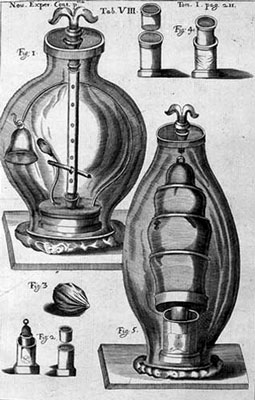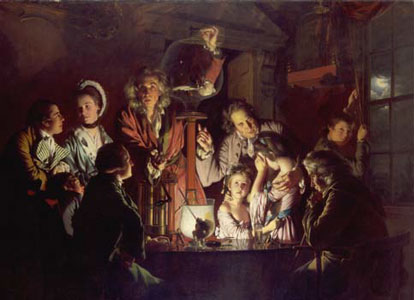The Vacuum
|
Gasparo Berti, 1641 |
Vincenzio Viviani & |
|
|
|
Blaise Pascal, 1647
|
|
Otto von Guericke, 1654
|
||
|
|
|
|
|
"Finally, the eights were hooked and, as 16 horses
pulled against each other, the hemispheres held and again Guericke's
theory proved true. The audience was impressed; most of them believed
the draft horses would be able to separate the hemispheres." |
|
|
Footnote
References
|
 |
Robert Boyle, 1660:
|

|
David R. Scott, 1971
|
 |
Ewerdt Hilgemann, 1994Hilgemann creates "imploded" sculptural shapes by removing the air from simple geometric hollow constructions. By pointing to an absent vacuum, these shapes constitute unusually sharp representations of "nothing". |
||
|
|
|
|
Remko Scha – December 18, 2005